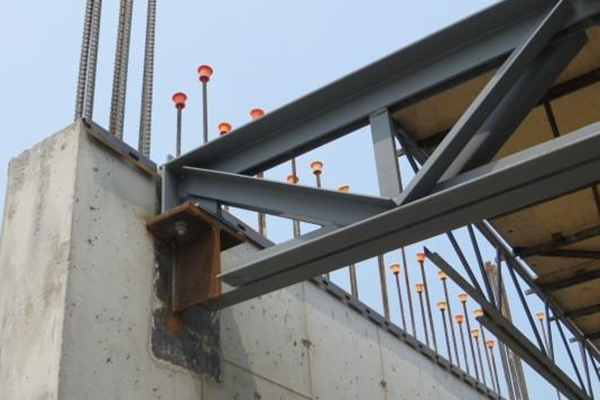Girders are one of the most important structural components in construction, playing a critical role in supporting heavy loads and providing stability to buildings, bridges, and other large structures. Essentially, a girder is a large horizontal beam that supports smaller beams or joists, distributing loads to vertical supports such as columns or walls. While the term “girder” can be broad, engineers typically classify them into three main types: I-beam girders, box girders, and plate girders. Each type has unique characteristics, advantages, and ideal applications.
1. I-Beam Girders
I-beam girders, also known as rolled steel joists (RSJs) or universal beams, get their name from their distinctive “I” shape when viewed in cross-section. This design consists of two horizontal flanges connected by a vertical web.
Features and Advantages:
-
High strength-to-weight ratio: The I-shape efficiently handles bending and shear forces, making it strong yet relatively lightweight.
-
Ease of manufacture: I-beams are usually rolled in steel mills, meaning they are ready to use without extensive fabrication.
-
Versatility: They can be used in a wide range of structures, from residential buildings to large bridges.
Applications:
I-beam girders are commonly used in building frameworks, bridge decks, and industrial structures where straightforward installation and cost efficiency are important. They are ideal for moderate spans and loads, but for extremely long spans, other girder types may perform better.
2. Box Girders
A box girder is a hollow structure, usually rectangular or trapezoidal in shape, formed by welding steel plates together or by using reinforced concrete. The closed shape provides exceptional torsional stiffness, making it perfect for applications where twisting forces are a concern.
Features and Advantages:
-
High torsional resistance: The hollow box design resists twisting, making it suitable for curved bridges or structures exposed to wind.
-
Aesthetic appeal: Box girders often give bridges a sleek, modern appearance.
-
Capacity for long spans: They can efficiently handle long spans without excessive deflection.
Applications:
Box girders are widely used in modern bridge construction, particularly in highway flyovers, overpasses, and elevated roadways. They are also seen in structures where appearance and aerodynamics matter, such as cable-stayed bridges.
3. Plate Girders
Plate girders are large beams fabricated by welding or bolting together steel plates to form an I-shaped cross-section. Unlike I-beam girders, which are rolled in a mill, plate girders can be custom-made to suit specific structural requirements, allowing for greater flexibility in size and strength.
Features and Advantages:
-
Customizable design: Engineers can adjust the flange and web thickness to match the load demands.
-
Ability to span great distances: Plate girders can be much deeper than rolled I-beams, making them suitable for very long spans.
-
High load capacity: They can carry heavy loads in industrial facilities and bridges.
Applications:
Plate girders are often found in railway bridges, industrial cranes, and long-span building structures. They are chosen when standard rolled beams cannot meet the strength or size requirements.
Choosing the Right Type of Girder
The choice between I-beam, box, and plate girders depends on factors such as:
-
Load requirements: Heavier loads may require plate or box girders.
-
Span length: Longer spans generally favor plate or box girders over standard I-beams.
-
Structural environment: Curved or wind-exposed structures often benefit from box girders.
-
Cost and fabrication needs: I-beams are the most economical for shorter, simpler projects.

Conclusion
While all girders serve the essential purpose of supporting and distributing loads, their design differences make them better suited for specific applications. I-beam girders are economical and versatile for general use, box girders excel in torsional strength and aesthetics for long, curved spans, and plate girders offer custom strength solutions for heavy-duty and long-span projects. Understanding these distinctions ensures that engineers and builders can select the most efficient and cost-effective option for any structural challenge.
Post time: Aug-14-2025





